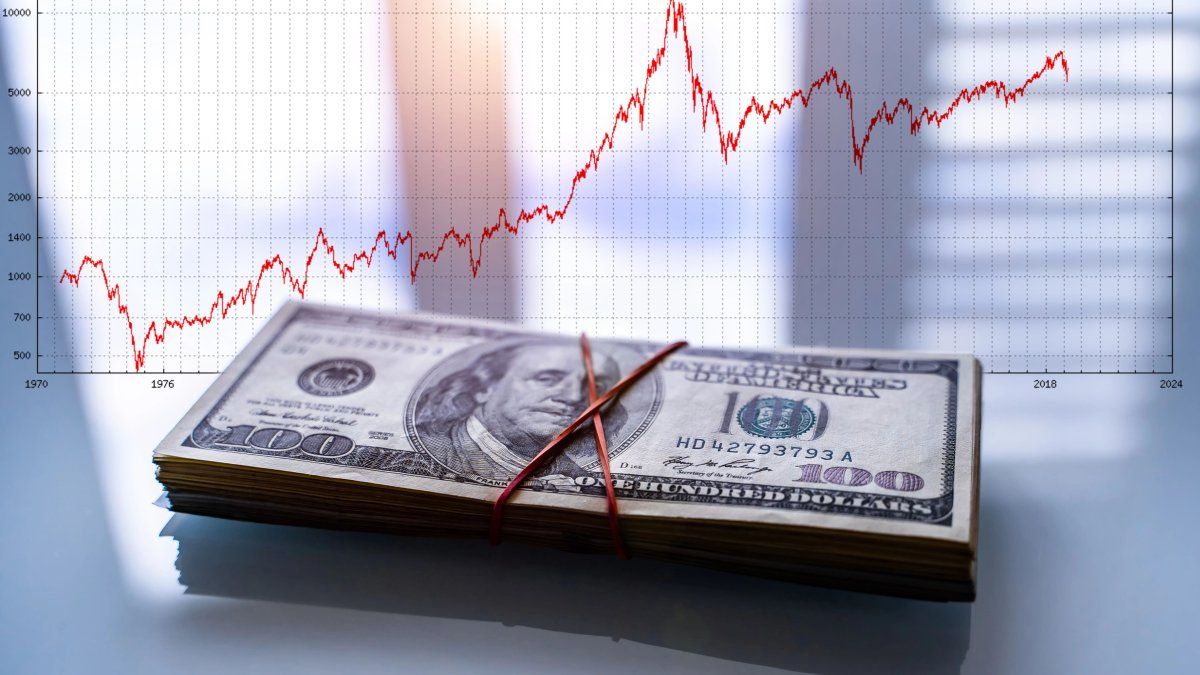Dampers for growth
Business Institutes significantly reduce prognosis for Germany
Copy the current link
Add to the memorial list
Leading economic research institutes predict a small minus in economic growth for Germany this year-because of the US customs policy.
The country’s leading business institutes have drastically lowered their growth expectations for the current year. The customs policy of US President Donald Trump will keep Germany in the recession, according to leading economic research institutes.
In its community diagnosis presented on Wednesday, the institute assumes only 0.1 percent growth in 2025 instead of 0.8 percent before. However, at least 0.1 percentage points would have to be deducted from this due to US customs policy. In addition, there would be structural problems such as the shortage of skilled workers and excessive bureaucracy.
Germany threatens a third year of recession, i.e. persistently shrinking economic output.
Economy: Investments only “gradually bring” growth thrust
From the new federal government and constitutional amendment, to boost investments in defense, climate protection and infrastructure, the researchers expect positive impulses, but only “gradually”. Accordingly, this year “hardly any additional funds for defense and investments should be called up”.
Among other things, because of the investment package, the institutes will expect 1.3 percent growth in the coming year – but starting from a lower level. 0.3 percentage points go back to a higher number of working days. However, the youngest US tariffs are not included here.
“Germany not only suffers from an economic weakness, but has structural problems,” emphasized the economists. China competes, some of the energy -intensive industry seems to be broken away permanently, the experts write. Accordingly, the employment population shrinks and the bureaucracy presses.
“They cannot be solved by a mere increase in government spending and make potential reforms all the more urgent.”
The institutes’ council: secure social security systems in an aging society, more incentives to work and qualified immigration. Energy prices would have to fall, greenhouse gas savings would have to be achieved primarily via a CO2 price. A “thoroughly derogatization” is also necessary.
The United States trade policy influence economic growth in Germany
With a view to the US tariffs, the researchers have estimated the possible effect of the surcharges on aluminum, steel and auto exports in the USA. Accordingly, you could “reduce the growth of the gross domestic product this year and next year by 0.1 percentage points”.
However, US President Donald Trump announced further tariffs on April 2 and recently reduced them. The concrete effects of Trump’s politics are also difficult to quantify, “since customs duties have never been increased so much in the current globalized economic structure”. When Trump’s recent customs increases from early April and counter -tariffs are added, the losses should double to 0.2 percentage points in both years, the experts. “There have not been such high customs duties in the United States since the Great Depression of the 1930s,” the experts write.
Stable inflation by 2026
“The geopolitical tensions and the Protectionist trading policy of the United States tighten the already tense economic situation in Germany,” said Torsten Schmidt, economic head of the Leibniz Institute for Economic Research (RWI). “In addition, German companies are exposed to increased international competition – especially from China.”
The institutes do not expect any major rashes in inflation. This year, consumer prices should again increase by 2.2 percent. In 2026, the inflation rate should then fall to 2.1 percent. The Federal Government serves the spring forecast as the basis for its new projections, which in turn form the basis for the tax estimate.
The Germans save
Even if people have more money in their pockets again, private consumption increased little last year at 0.3 percent. A lot of money flowed into savings, the savings rate was 11.4 percent in 2024 – so much of the available income did not spend private households out, but cover it.
According to the report, the unemployment rate may increase from 6.0 percent in the past 6.3 percent in the current year and will fall again to 6.2 percent in the coming year. Workplaces were lost, especially in the processing of businesses, construction and company service providers. In the public service, in the upbringing and in the health sector, new jobs would be created.
The “Community Diagnosis” is created on behalf of the Federal Ministry of Economics by the German Institute for Economic Research, the IFO Institute, the Kiel Institute for the World Economy, the Leibniz Institute for Economic Research Hall and the RWI-Leibniz Institute for Economic Research. It flows into the government forecast, on the basis of which the tax revenue is estimated.
Note: This article has been updated and further information was added.
AFP · dpa
RW
Source: Stern





